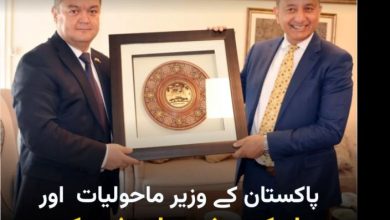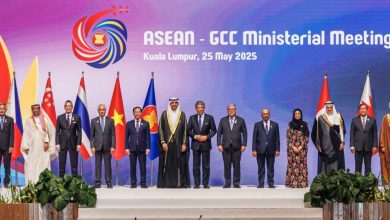Taiwan’s exports slip again after brief uptick, with weak iPhone sales driving decline
Shipments overseas declined 4.5 per cent year on year in October to US$38.11 billion, the island’s Ministry of Finance said on Tuesday. In September, Taiwan logged its first export gain in 13 months.
“The global economic downturn, which has led to a reduction in consumers’ disposable income, has weakened demand in the consumer market,” said Rachel Liao and Wayne Hsu, senior analysts with the Market Intelligence and Consulting Institute in Taipei.
Parts of Asia are coming off their worst in terms of trade
Deliveries of smartphones, which use a range of components made in Taiwan including chips, dropped for a fourth straight quarter in the July-September period of 2023 “amid weak consumer demand”, market research firm Counterpoint said in a November 3 statement.
Apple’s iPhone shipments fell 11 per cent year on year in the third quarter partly because of a later launch date of the iPhone 15 series compared to its immediate predecessor.
Reflecting this hesitancy, Taiwan-based iPhone contract assembler Foxconn Technology reported a 4.56 per cent decrease in sales revenue last month compared to October 2022.
Electronic components account for about 78 per cent of all Taiwanese exports, and Taiwan is the world’s biggest supplier of semiconductors.
Shipments of those components slipped 7.4 per cent last month compared to the same month last year, for total export value of US$15.64 billion per ministry data. Integrated circuits made up most of that category.
Results of mainland China’s trade probe could come on eve of Taiwan election
Results of mainland China’s trade probe could come on eve of Taiwan election
Analysts said the July-September quarter is normally stronger for hi-tech manufacturing than the final three months of each year, as companies prepare for holiday orders – another possible explanation for the October decline.
But Taiwan’s exports of information, communications and audiovisual products rose 37.6 per cent in October, year on year, to about US$9 billion.
“Parts of Asia are coming off their worst in terms of trade, and we’re seeing that from South Korea and Taiwan,” said Mitul Kotecha, head of foreign exchange and emerging market strategy for Asia at Barclays.
“That said, we’re not getting too excited,” he said.
On the plus side, inventory problems in Taiwan’s elaborate smartphone supply chain which emerged over the past year had returned to “healthy” levels from July through September, Liao and Hsu said in written comments for the Post.
The CEO of bellwether chip maker Taiwan Semiconductor Manufacturing Company told an investor conference in October that he saw “early signs of demand stabilisation in PC and smartphone end markets”, its two biggest business segments.
Taiwan still counted mainland China and Hong Kong combined as its largest export market last month at US$14.18 billion, the ministry in Taipei said, even after a 3.6 per cent drop.
Taiwan’s exports to the United States gained 12.1 per cent last month, reaching US$7.19 billion. But European clients bought just US$3.16 billion in Taiwanese exports, the result of a 16.8 per cent year-on-year drop in October.
Trade will not be a “key driver” for mainland China in the near term, challenging its giant economy, Kotecha said, while Europe’s growth is “stagnating”.






